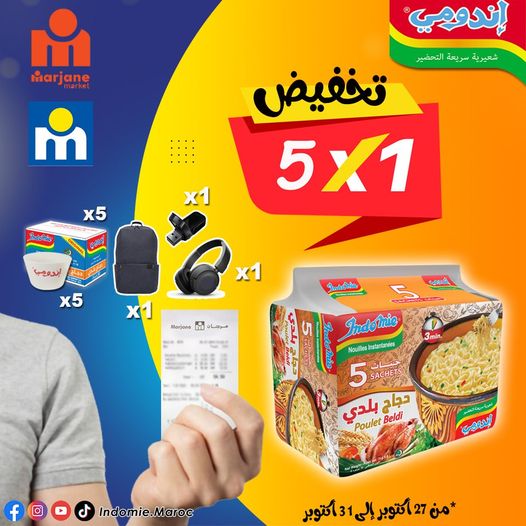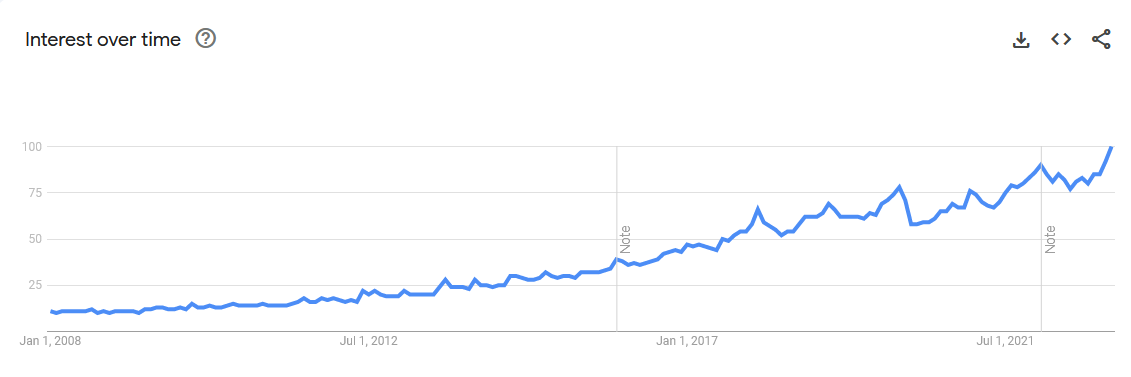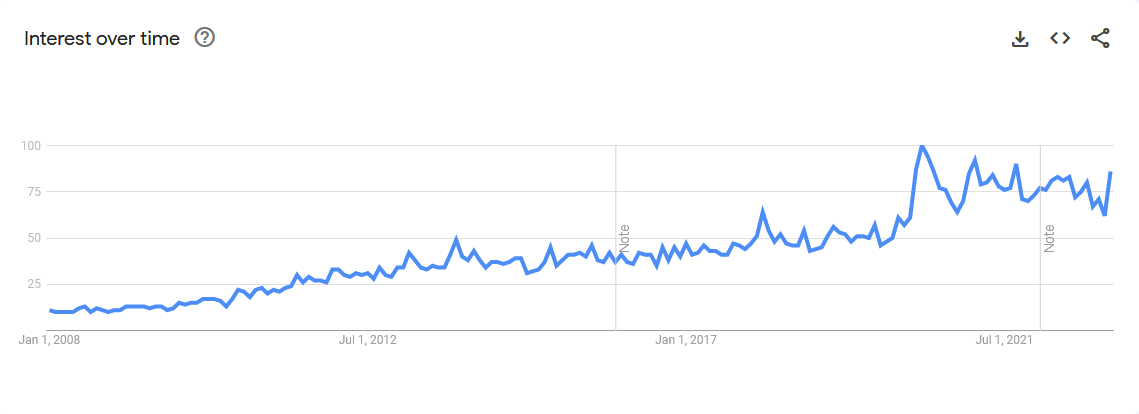Moroccan Seffa is a savory Moroccan dish made from stewed saffron lamb meat, served with broken Vermicelli, and topped with almonds, raisins, and powdered sugar. This dish –perfected over generations– represents Moroccan cuisine with all of its complex flavor profiles.
Yet, growing up, I ate instant noodles every time Seffa was served. Despite the two being fundamentally the same: a Noodle-based dish with complex seasoning. Young me always reached for the Shrimp-flavored Indomie.
This severely angered my parents.
For them, Indomie was a harmful foreign product similar to fast food. But for me, Indomie was something I had known ever since I was a child. It was always there, It was Moroccan, it was normal,
Only when I reflected on this doughy memory, I realized that Indomie is an Indonesian product, based on a Japanese invention, that has seamlessly integrated its way into Moroccan society.
Figuring out that this was odd, I decided to investigate and research just exactly how Indomie dominated the Moroccan market and normalized instant noodles.
How Indomie Entered Morocco
Indomie was first introduced in 1972 by the Salin Group food giant in Indonesian markets.
Inspired by Japanese instant noodles, the food group created Indomie, whose name is derived from “indo” short for Indonesia, and “mie” which is the word for noodles in Indonesia.
The product was an instant success that quickly made its way into African markets through imports in the 1980s.
In various African countries like Nigeria and Ethiopia, Indomie quickly rose to popularity thanks to its nutritional value at a cheap price which substituted carbs like rice and potatoes during economic hardships.
This success encouraged Indofood, the company responsible for Indomie, to open a factory in Nigeria in 1995 to fulfill the growing demand in the African markets.
While there is no documentation to prove it, Indomie was most likely introduced to Morocco through imports from Nigeria and other countries in the early 90s, possibly even earlier.
Following additional Indomie factories in Ethiopia, Kenya, and Egypt, Moroccan importers had multiple import faucets at their disposal. The ease of access made Indomie cheaper for the Moroccan consumer thus leading to a bigger customer base.
By 2010, Indomie became so popular in Morocco to the point of appointing official distributors in the country.
Finally, in 2016, the Indomie Moroccan customer base solidified, driving Indofood to open a factory in Sidi Boukhalkhal to keep up with national demand and increase growth for international exports.
How Indomie Established Itself in Morocco
With a production factory and a loyal customer base, Indomie achieved the difficult feat of normalizing a food group in a country that deemed Indomie as novel and exotic.
To reach this point, Indofood implemented various tactics. From clever marketing strategies to misconceptions, the following two strategies were key to their success.
Strategy 1: Free Trials and Giveaways
Back in the early 2010s, I queued up next to the Indomie stand in my local Souq to try out instant noodles for the first time. The paper cup was full of warm chicken-flavoured Indomie and tasted good – especially since it was free.
That was my 1st time trying out Indomie and I have been hooked ever since.
Granted this experience was not unique to me, my souq, or my city. 10-year-old me was playing a part in the grand strategy of Indofood to normalize Indomie through product samples.
Even if prospects did not enjoy Indomie, this ‘in-the-field’ marketing strategy normalized Indomie through frequent appearances in popular areas like souqs or malls.
Pair that with attractive giveaways like electronics or cars, Indofood made sure to always incentivize consumers to buy Indomie.



One could even assume that Indofood relied on the long-term strategy of investing in a young demographic who would carry on purchasing Indomie for life once they accounted for the main purchasing power – similar to McDonald’s strategy. However, it is unclear whether Indomie capitalized on that or not.
What we do know for sure, is that Indofoods’ active marketing campaign took Indomie’s reputation from “exotic product” to “normal food” in just a decade – essentially establishing itself in the Moroccan market.
Strategy 2: Taking Advantage of Misconceptions
The Late 2000s and early 2010s were significant for Television in Morocco. Channels like 2M, Al Oula, Medi1, MBC 2, MBC 3, and MBC Action were popular among adults, children, and families.
At the time, Indofood just started executing its growth strategy in both African and Middle Eastern markets. Television adverts about Indomie were being displayed all across these channels.
I grew up watching Middle Eastern television with channels like MBC 3 and Spacetoon being some of my favorites.
In between episodes of Blazing Teens and Beyblade, I watched ads like Foula’s cereal, nerf toys, and most importantly, Indomie which normalized Indomie’s position in the Moroccan market. Interestingly, they masked Indomie’s Indonesian roots and promoted a Middle Eastern origin narrative.
When I was researching this article, I ran a poll on my Instagram asking my audience about Indomie’s country of origin. While some correctly guessed Indonesia, a large number of people answered with countries like Egypt and Saudi Arabia.
This misconception in Moroccan consumers worked in Indofood’s favor, as Middle Eastern products are favored –and more popular– among Moroccan consumers in contrast to Southeast Asian countries.
Why Indomie Still Remains Succesful in Morocco
As we’ve implied, Indomie is now normalized like any other product in the Moroccan market. However, that aspect alone doesn’t grant Indofood enough leeway to slack on its marketing efforts.
Through social media, cultural trends, and other factors Indofood –or at least the company/agency responsible for marketing Indomie– is maintaining its presence among the Moroccan consumer.
Factor 1: Influencer marketing
Influencer marketing is the most recent buzzword in the digital marketing industry. You’re most likely aware of its importance and how it works. This is why I will spare you the details of why Indofood utilized influencers.
Instead, I want to emphasize the type of people Indomie sponsors. Specifically, cooking or lifestyle creators with a medium to large following base. An account with a small following implies that its audience is top-quality given how intimate small creators tend to be with their followers.
Sponsoring influencers –either financially or with products– to promote recipes or videos featuring Indomie inspires the watcher to purchase the product. Given that most small accounts are cheap to sponsor or more willing to accept product deals, Indomie can expand its influencer collaborations at minimal costs.
Factor 2: Popularization of East Asian culture


In recent years, Eastern Asia countries –mostly Japan and South Korea– have tremendously grown in popularity. In turn, their cultures and dishes are being shared all around the world.
From the South Korean Japchae and the Samyang hot noodles to Japan’s shio ramen and soba, people across the world are curious to try out these dishes. The closest alternative to noodles for someone in Morocco will most likely be Indomie.
On top of that, visual and social media often feature some form of content involving noodles, which can trigger cravings for Indomie.
Factor 3: Mono Sodium Glutamate (MSG) Concentration
Visuals are not the only way to trigger instant noodle cravings. Some chemicals can biologically entice your brain to crave instant noodles. For Indomie, the substance is called Mono Sodium Glutamate (MSG for short), which is a chemical compound naturally found in foods such as tomatoes and cheese as well as snacks.

Instant noodle companies worldwide utilize MSG for its flavoring and addictive properties. Taste-wise, MSG introduces a salty Umami-like flavor which is common in East Asian cuisine. On a chemical basis, MSG’s glutamate activates pleasure zones in the brain thus developing addiction.
The seasoning packet of Indomie products contains Monosodium Glutamate. While the exact amount is not specified, one research group found a percentage of 7.3% of the total net weight, which is slightly above 5% as recommended by the European Food Safety Association.
I’ve reached out to both Indomie and the ONSSA (the National Food Safety Entity) regarding MSG usage and its impact on consumer health. Both parties did not respond.
Factor 4: The Economy
When I polled people on my Instagram about why they continue to buy Indomie, many responded that it was cheap. Instant noodles have a vast reputation for being the staple food for broke college students and graduates.
Thanks to the current economy, young adults have limited income meaning that Indomie is an attractive option for shoppers on a budget.
Conclusion
Indofood’s growth strategy in Morocco was long-term. What began as niche international product imports from Nigeria and the Middle East turned into a production factory in the heart of Morocco and millions of sales every month.
Knowing that Generation X and above had no constant interest in instant noodles, Indofood shifted its efforts towards Millenials and below. Through aggressive direct marketing, free samples, and some luck Indomie became normalized and ingrained in the minds of the younger generation.
Their loyal client base –manipulated at a young age– now constitutes the main purchasing power that drives the economy. As they strive toward financial success in a struggling financial system, Indomie provides the biological fuel and mental comfort to continue for another day.
And for my childhood self, I wish I could go back in time and show him that you can eat Seffa with Indomie.

It exists and it is cursed.
